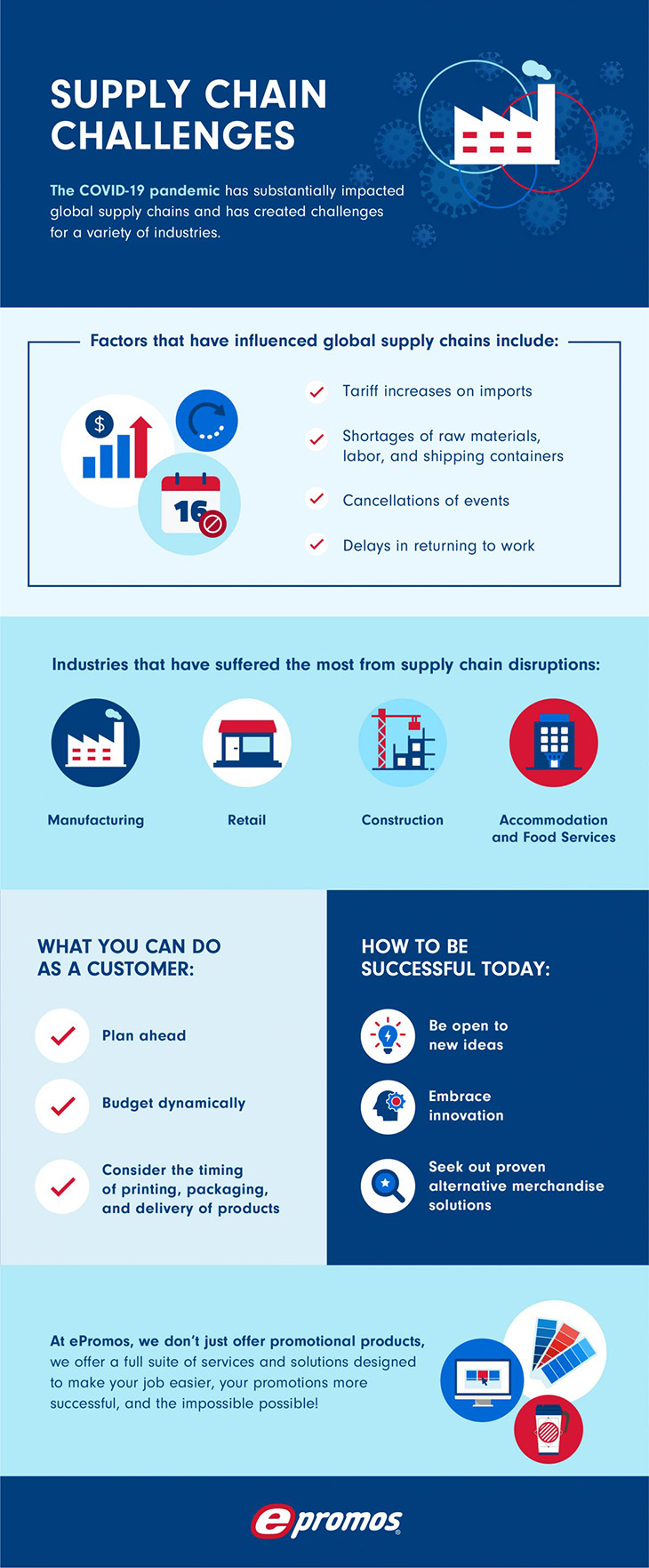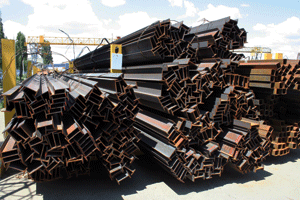While the pandemic is winding down and vaccines are more available than ever, the lingering effects of COVID-19 continue to make shipping goods a serious challenge.
Experts predict that many of the supply chain disruptions most businesses face right now — like port congestion and raw materials shortages — will carry over into 2022.
This is what business owners and manufacturers should expect next year, and how they can act to prepare operations for ongoing supply chain challenges.
The State of the Supply Chain
While the global economy is slowly beginning to recover from the COVID-19 pandemic, the aftershocks of the initial disruption to the economy continue to make moving goods much more difficult.
Right now, manufacturers are impacted most by three main supply chain challenges — transportation bottlenecks, a growing labor gap and raw material shortages.
Bottlenecks exist for most modes of freight transportation. A number of ports are facing record levels of port congestion, with some ports facing vessel wait times of up to 17 days. Shortages of essential shipping equipment, like containers and container chassis, are also making it harder to unload ocean freight and ship goods by sea.
Rising ocean freight prices, in part a result of this congestion, have begun spilling over to air freight — now causing serious congestion in airports around the world. In mid-November, global air freight capacity fell by around 5.5% as a result.
At the same time, industries across the economy are also struggling with an ongoing labor shortage. There are signs that this shortage may be getting worse — a record 4.4 million U.S. workers quit their jobs in September 2021.
As a result, the trucking industry faces a shortage of around 80,000 workers in the U.S., meaning that it is sometimes just as difficult to move goods nationally as it is internationally.
Lingering materials shortages continue to make essential components and raw materials more difficult to source. Steel, lumber, semiconductors and chemical shortages have disrupted most manufacturing industries — causing delays or the removal of certain product features. While supply shrinks, demand continues to rise around the world.
Various smaller crises, unrelated to COVID, have made some of these raw materials challenges more severe. An outbreak of bark beetle infestations among pine trees in Europe, for example, could be partly to blame for elevated lumber prices.
Wildfires, drought, snowstorms and other extreme weather events have also disrupted raw materials production and local supply chain operations around the world.
Why are global supply chains still struggling so long after the end of COVID-19? Much of the slack that existed in the pre-pandemic supply chain is still being rebuilt. At the same time, raw materials suppliers are working to keep up with levels of demand that have recovered or even grown beyond pre-pandemic levels.
It’s likely that manufacturers will continue to struggle with these supply chain challenges until that slack is back in the system.
In general, most of these issues can be traced back to COVID-19, which means that global supply chains should be on track for a slow-but-steady recovery to the mean over the next year. Most manufacturing sectors are reporting growth right now — in October, the furniture, machinery and only the printing industry reported a contraction.
Preparing for Supply Chain Challenges in 2022
Manufacturing industry analysts and supply chain experts recommend various strategies for manufacturers wanting to effectively navigate supply chain management in 2022.

Promotional packaging manufacturer ePromos, for example, has suggested that manufacturers stay flexible and actively seek out alternative suppliers and sources for essential raw materials. Redundancy and backups in the supply chain can help any business manage volatility.
During a crisis, it may be easier for a business to reroute goods or shift orders to another supplier if this resilience is built into their business supply chains and sourcing operations.
Relying on other best practices for managing volatility may also be effective. Safety stock can help manufacturers prepare for short-lived supply crunches and periods of unusually high demand. Diversifying suppliers and shipping partners can help businesses to avoid regional and local supply chain disruptions.
Similarly, distributing inventory can also help businesses respond to fluctuating demand. By dividing stock among multiple warehouses, the business will be in a better position to quickly ship goods to regional customers if demand in a particular area rises faster than demand in others.
For larger enterprises, investment in technology that may help the business to predict market conditions — like AI-powered supply chain optimization software — may also be helpful.
All businesses can benefit from supply chain management technology. As predictive analytics becomes more common, smaller manufacturers may also be able to take advantage of these tools to more effectively forecast consumer demand.
Will Supply Chain Disruptions End Before 2022?
While some experts believe that the disruptions could be on track to end within the next year or so, manufacturers should plan for 2022 with these supply chain challenges in mind. Most experts predict that we’re not likely to see a quick resolution to any of the major current supply chain disruptions — labor demand continues to outstrip supply,
Various possible end dates have been suggested for each of these supply chain crises.
For example, Peter Sand, chief shipping executive at BIMCO, said in September that the 2023 Chinese Lunar New Year, around 15 months away, “is the ‘bold view’ for relief of intense pressure on the supply chain.”
Labor experts believe that the current worker shortage may begin to resolve by the end of this year, or early in 2022. Others are less optimistic and unwilling to commit to a specific prediction.
Raw materials shortages may be on a similar timeline. Construction industry observers, for example, expect lumber prices to retreat sometime in 2022.
Manufacturers Can Prepare for Ongoing Supply Chain Disruptions
Industry experts believe that these supply chain difficulties could last into 2023. Manufacturers can take action now to prepare for the continued impact of these challenges in 2022.
Best practices that help manufacturers build more resilient and flexible supply chains can help them navigate the ongoing labor gap, raw materials shortage and transportation bottlenecks. Diversification of suppliers, distribution of inventory, communication with shipping partners and
























